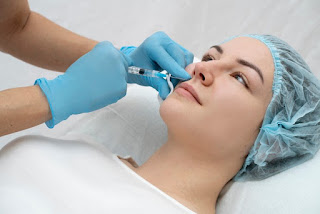Harnessing the True Potential of PRP Therapy for Joint Pain
While conventional therapies like physical therapy, analgesics, and surgery have traditionally been the preferred choices, a ground-breaking and optimistic substitute called PRP Therapy for Joint Pain has arisen in recent years.
With this ground-breaking technique, joint discomfort may be reduced naturally without surgery, which speeds up the recovery process.
Understanding PRP Therapy
PRP therapy, sometimes referred to as autologous conditioned plasma (ACP) therapy, is a medical procedure that makes use of the patient's blood to accelerate healing and lessen discomfort. The steps in the process are as follows:
Blood Collection: Just like with a standard blood test, a little sample of the patient's blood is taken, usually from the arm.
Centrifugation: To separate the components of the collected blood, the blood is spun at a high speed in a centrifuge machine.
Extraction of Platelet-Rich Plasma: Red blood cells, plasma, and platelets are separated during the centrifugation process. The treatment's platelet-rich plasma is then collected.
PRP is injected directly into the injured joint and is high in growth factors and healing capabilities.
How PRP Therapy Alleviates Joint Pain
Because of its extraordinary capacity to reduce joint Pain and increase mobility, PRP treatment is becoming more and more popular in the fields of pain management and orthopedics. It is how it goes:
Anti-Inflammatory and Pain Relieving: Growth factors found in platelets aid in reducing inflammation and relieving Pain. PRP treatment can considerably reduce Pain and suffering by administering a concentrated dosage of these growth factors to the injured joint.
Regeneration of Tissue: PRP treatment activates the body's healing mechanisms. Growth factors and other bioactive components of PRP, such as cartilage, tendons, and ligaments, promote the regeneration of injured tissues.
Low danger: Since PRP therapy uses the patient's blood, the danger of allergic reactions or other negative consequences is low. The safer, more natural alternative to more intrusive procedures
Conditions Treated with PRP Therapy
PRP therapy has demonstrated excellent potential in the treatment of several joint-related disorders, including:
Osteoarthritis: PRP injections have been used to treat the symptoms of this prevalent joint condition, which destroys cartilage.
Tendinitis: PRP treatment can be used to treat tendon inflammation, lowering discomfort and increasing recovery.
Injury to a ligament: PRP injections can speed up the healing of injured ligaments like the anterior cruciate ligament (ACL).
Rotator cuff injuries: It is a frequent issue in the shoulder and can be treated using PRP treatment to speed up recovery.
Sports Injuries: PRP treatment is frequently used by athletes to quicken their recovery from sports-related injuries so they can go back on the pitch.
Conclusion
The use of platelet-rich plasma therapy as a treatment for joint Pain is both fascinating and successful. PRP therapy for joint Pain helps to enhance tissue regeneration while reducing Pain and inflammation by using the body's healing processes. Many people with joint discomfort prefer it since it provides a secure and minimally intrusive alternative to conventional therapy.
Even though PRP therapy has had impressive outcomes, it's important to speak with a doctor to see if it's appropriate for your particular situation. PRP therapy remains a ray of hope for people looking for relief from the weight of joint Pain and restrictions on their everyday lives as research in regenerative medicine continues to advance.





Comments
Post a Comment